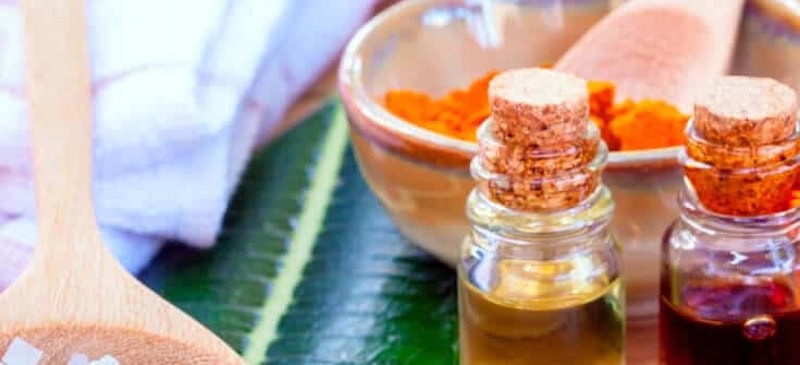This Dr. Axe content is medically reviewed or fact checked to ensure factually accurate information.
With strict editorial sourcing guidelines, we only link to academic research institutions, reputable media sites and, when research is available, medically peer-reviewed studies. Note that the numbers in parentheses (1, 2, etc.) are clickable links to these studies.
The information in our articles is NOT intended to replace a one-on-one relationship with a qualified health care professional and is not intended as medical advice.
This article is based on scientific evidence, written by experts and fact checked by our trained editorial staff. Note that the numbers in parentheses (1, 2, etc.) are clickable links to medically peer-reviewed studies.
Our team includes licensed nutritionists and dietitians, certified health education specialists, as well as certified strength and conditioning specialists, personal trainers and corrective exercise specialists. Our team aims to be not only thorough with its research, but also objective and unbiased.
The information in our articles is NOT intended to replace a one-on-one relationship with a qualified health care professional and is not intended as medical advice.
Turmeric Antiseptic Scabies Cream: Natural DIY Remedy to Soothe Symptoms
June 18, 2025

Scabies sounds so daunting, and it can be for anyone who has it. If you’re looking for an effective, natural solution to help relieve the symptoms of scabies, this DIY turmeric antiseptic scabies cream is packed with powerful, plant-based ingredients known for their antimicrobial and skin-soothing properties.
Unlike conventional treatments that may come with side effects or harsh chemicals, this homemade cream uses ingredients like neem oil, turmeric and tea tree essential oil to help fight the underlying cause while also calming irritation.
In this guide, we’ll explain what scabies is, break down the benefits of each ingredient in this DIY scabies cream recipe and walk you through how to make your own turmeric antiseptic scabies cream at home.
What are scabies?
Scabies is a highly contagious skin condition caused by the microscopic mite Sarcoptes scabiei. These mites burrow into the skin to lay eggs, triggering an allergic reaction that leads to intense itching, redness and rash.
Scabies commonly affects areas like the wrists, elbows, armpits, waist and between the fingers. It spreads through close physical contact and can cause widespread discomfort if not treated promptly.
In this parasitic infestation and itchy skin condition, mites, known as Sarcoptes scabiei, burrow under the skin. Scabies consist primarily of the body’s allergic reaction to the mites, their eggs and their waste, and symptoms may not appear for up to two months after being infested.
The itching is usually worse at night, and symptoms may include hive-like bumps on the skin. These bumps usually appear on the elbows, wrists, buttocks or waist and can also get underneath fingernails and around the skin near jewelry, such as rings or wristbands.
The experts at the Centers for Disease Control and Prevention tell us that scabies is very common all over the world and can affect anyone. It typically spreads quickly in crowded conditions where there is frequent skin-to-skin contact between people, such as in hospitals, day-care centers and nursing homes.
Scabies can easily infect household members by sharing clothes, towels and bedding and is more likely to happen when the infested person has crusted scabies. Symptoms include pimple-like irritations or a rash, intense itching, especially at night, and sores caused by scratching.
The mites can live for up to a month on the human body. However, they can’t survive for more than 48-72 hours elsewhere, which is good news since tossing clothing and bedding into the washing machine can eliminate them.
Legends have suggested that humans can get scabies from pets, but this simply is not true because animals attract types of mites that will not survive on the human body.
Scabies can best be prevented by avoiding direct skin-to-skin contact with an infested person or with items that person has used.
There are things that can worsen the effects of scabies, such as vigorous scratching, a weakened immune system, existing infections, inflammation and a chronic illness.
Conventional treatment typically involves prescription creams that kill the mites, but natural alternatives like a DIY turmeric antiseptic scabies cream may help support the healing process by calming inflammation, soothing itchiness and assisting in mite control.
Key ingredients
While more serious cases may need professional treatments, more mild cases may benefit greatly from home remedies, including this DIY scabies cream. This homemade cream helps soothe itching and can speed up the healing process.
The curative ingredients include neem oil, which is a naturally occurring pesticide found in seeds from the neem tree. More specifically, azadirachtin is the most active component and is used for repelling and killing pests.
This scabies cream also contains benefit-rich turmeric, which has healing properties both externally and internally, along with coconut oil, lemon juice and tea tree oil.
Here is more on the beneficial ingredients in this turmeric antiseptic scabies cream:
Neem oil
Neem oil is a star player in this DIY scabies cream because of its potent antimicrobial and antiparasitic properties.
Traditionally used in Ayurvedic medicine, neem helps kill scabies mites and inhibits their ability to grow and reproduce. It also reduces inflammation, which helps soothe irritated skin and supports the body’s natural healing process.
Coconut oil
Coconut oil is good for skin because it is rich in medium-chain fatty acids like lauric acid, which exhibit antibacterial and antifungal effects. It acts as a gentle moisturizer that helps reduce itching and dryness often associated with scabies.
Coconut oil also serves as the base for the cream, allowing other active ingredients to be absorbed more easily into the skin.
Turmeric
Turmeric contains curcumin, a powerful anti-inflammatory and antimicrobial compound that can help calm redness and fight infection. When applied topically, turmeric may help reduce the appearance of scabies rashes while supporting tissue repair and skin regeneration.
Lemon juice
Lemon juice has natural astringent and antibacterial qualities. It helps cleanse the skin, reduce bacterial buildup and improve the appearance of blemishes left behind by scratching. Its acidity can also aid in balancing the skin’s pH.
Tea tree essential oil
Tea tree oil is widely known for its ability to fight parasites and infections. Its insecticidal properties have been shown to help kill scabies mites, while its anti-inflammatory and antifungal benefits offer relief from itching, swelling and secondary skin infections.
How to make turmeric antiseptic scabies cream
This easy-to-make scabies cream blends healing ingredients into a smooth, spreadable formula that can be applied directly to affected skin. Here’s how to make it:
In a small glass bowl, combine the neem oil and coconut oil to start. Mix until they’re well blended.
Next, add the ground turmeric powder and lemon juice to the mixture. Stir it thoroughly to form a smooth paste.
Then, add the tea tree essential oil, and stir it again until it’s fully incorporated and the entire mixture is whipped into the consistency of a cream.
From there, transfer the homemade scabies cream into a clean, airtight container. Store it in a cool, dark place.
To use this turmeric antiseptic scabies cream, apply it to clean, dry skin on affected areas two to three times daily. You then can leave it on or gently wash it off after 15 to 20 minutes.
Avoid using it on open wounds or sensitive areas, such as around the eyes or mouth. Wash your hands thoroughly after application, and discontinue use if irritation occurs.
One other note: Turmeric can stain clothing and furniture, so be careful when using this DIY scabies cream.
Using a natural scabies cream made with neem oil, turmeric, lemon juice, coconut oil and tea tree essential oil offers a gentle yet effective way to support the body’s healing process. While this DIY cream may help alleviate symptoms and discomfort, it’s important to consult a healthcare provider for a proper diagnosis and to ensure your scabies treatment plan is complete.
Combine this topical remedy with good hygiene and environmental cleaning to prevent re-infestation and promote long-term relief.
More DIY recipes
In addition to scabies, you can use turmeric and beauty oils to make many other homemade remedies to help quell symptoms and improve personal care. Here some to try:
- DIY Turmeric Face Mask for Glowing Skin
- DIY Blackhead Removal Mask with Turmeric, Peppermint & Frankincense
- DIY Hemorrhoid Cream with Turmeric & Tea Tree Oil
- Homemade Eczema Cream
- Homemade Frankincense Soap Bar
- Homemade Hormone Balance Serum
- Homemade Honey Citrus Shampoo
- Homemade Conditioner

Turmeric Antiseptic Scabies Cream
- Total Time: 5 min
- Yield: 30 uses 1x
Description
If you’re looking for an effective, natural solution to help relieve the symptoms of scabies, this DIY turmeric antiseptic scabies cream is packed with powerful, plant-based ingredients known for their antimicrobial and skin-soothing properties.
Ingredients
- 2 ounces neem oil
- 1 ounce coconut oil
- 1 ounce ground turmeric
- 1 ounce lemon juice
- 10 drops tea tree essential oil
Instructions
- Place all ingredients into a bowl and whip to the consistency of a cream.
- Apply the cream on the affected area two or three times a day.
- You can leave it on or gently wash off after 15-20 minutes.
- (Turmeric may stain clothing so be careful.)

